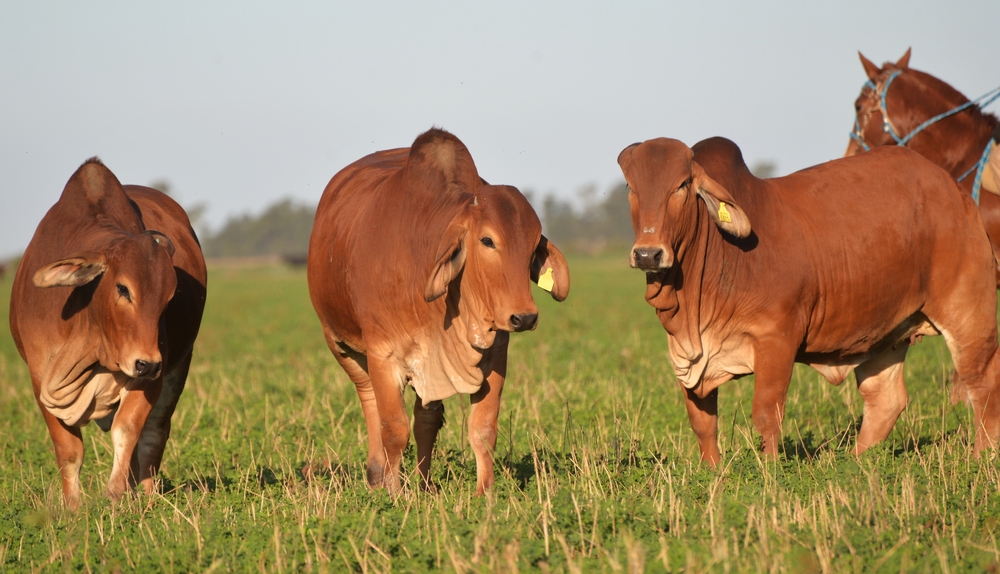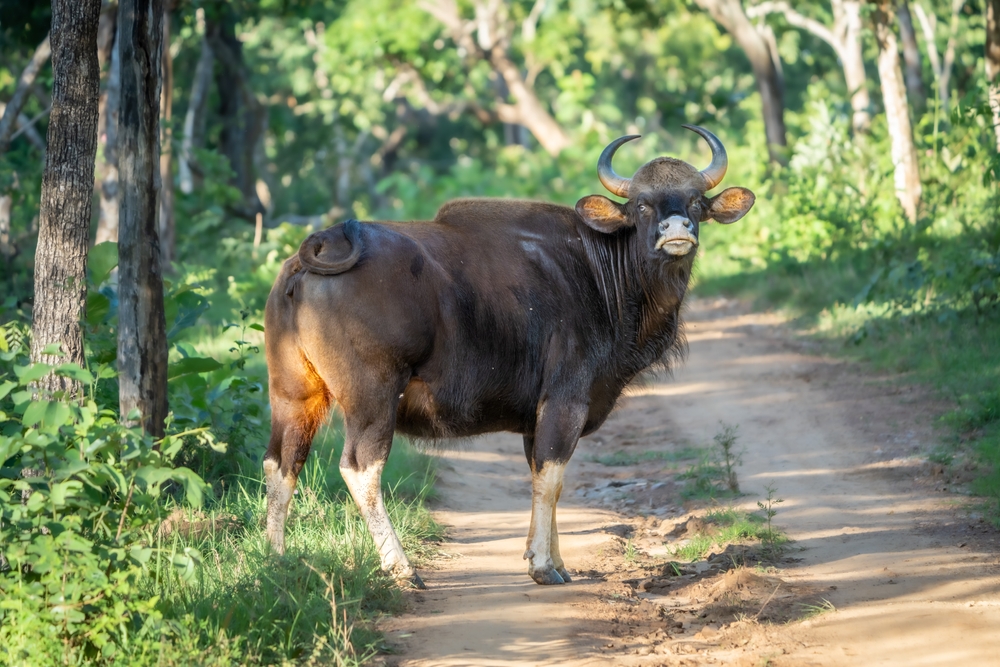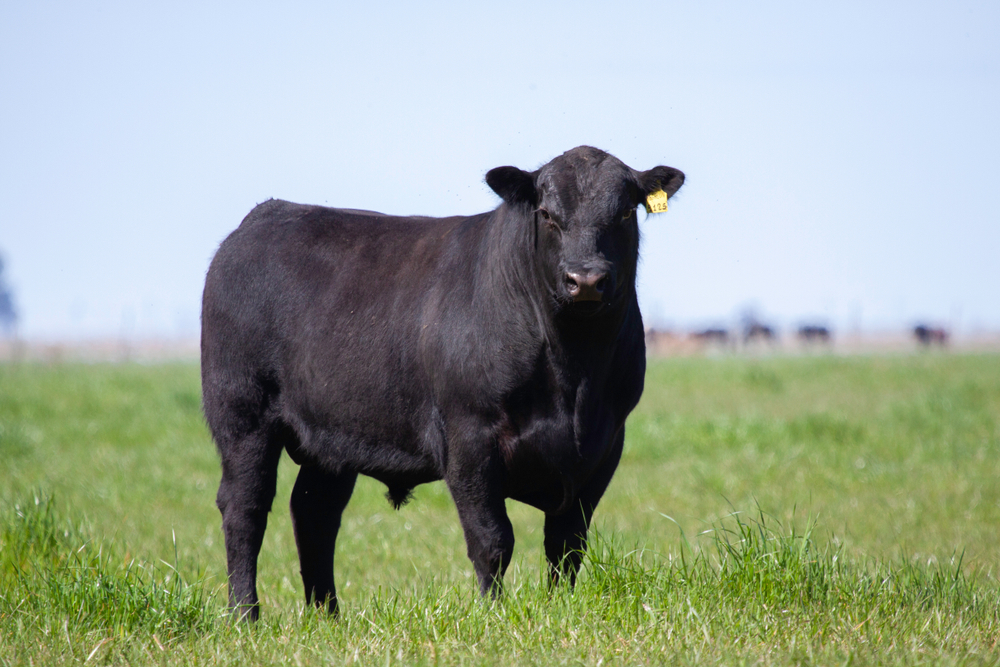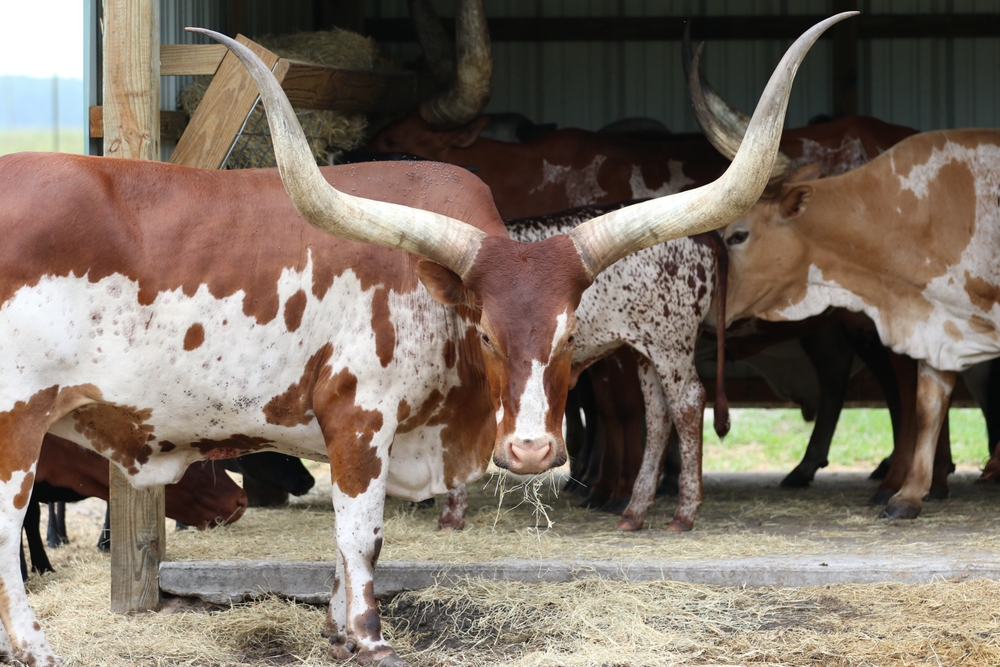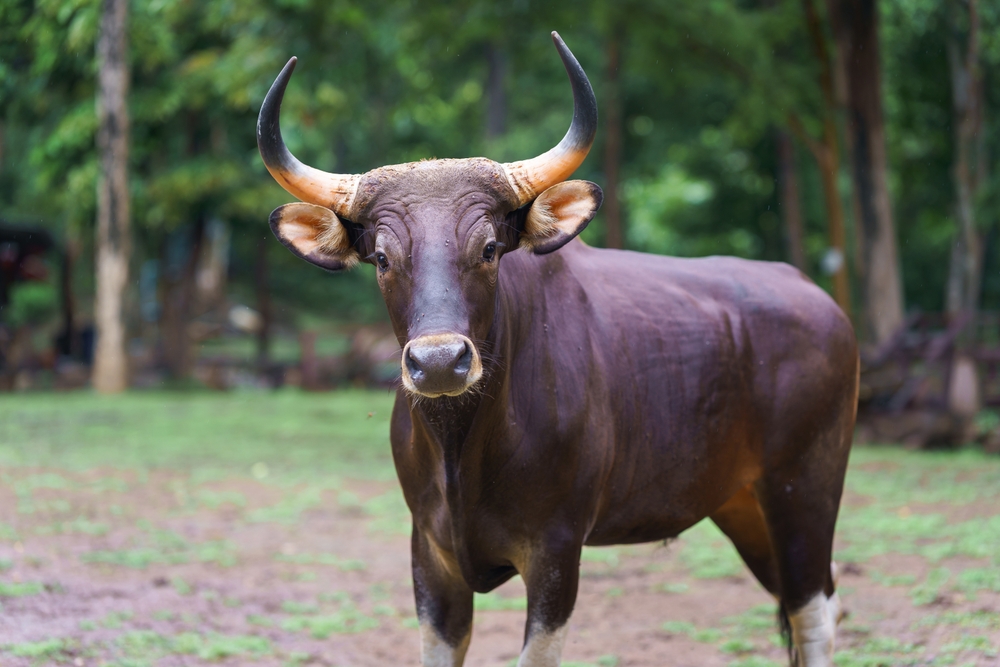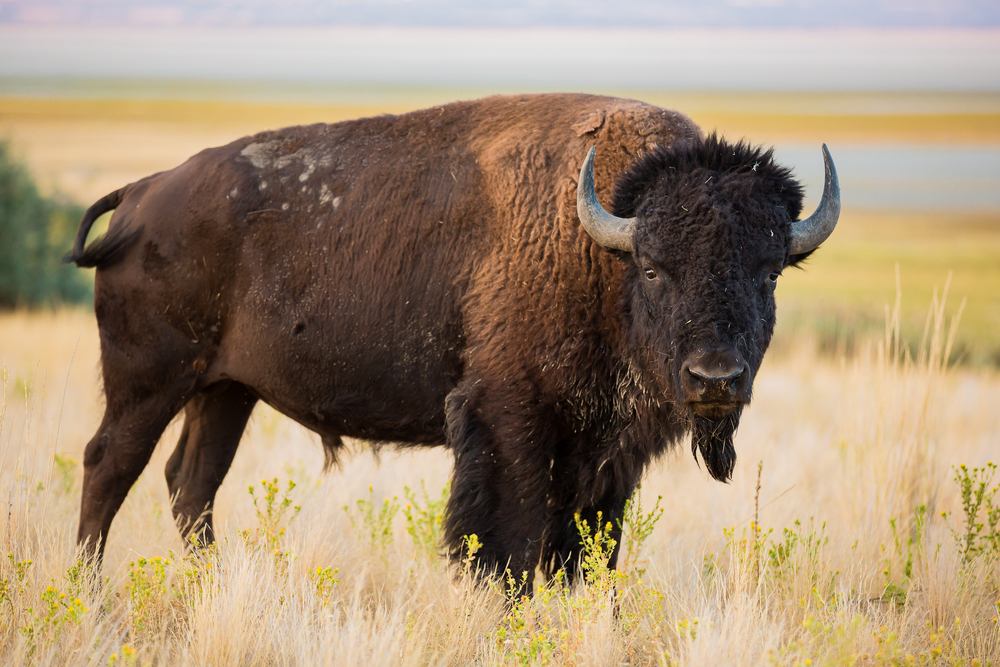The Brahma is a breed of domestic cattle (Bos taurus indicus), most closely related to other zebu-type cattle such as the Guzerá, Nelore, and Gir, all of which share Indian origins and similar heat-adaptive traits.
About
The Brahma cow (Bos taurus indicus) is a hardy and adaptable cattle breed originating from India and belonging to the family Bovidae, which includes buffalo, bison, antelope, and goats. Revered in its homeland for centuries, the Brahma was developed through selective breeding of native Indian cattle such as the Guzerat, Gir, and Nelore, with an emphasis on resilience, disease resistance, and tolerance to extreme climates. In the 19th century, these cattle were introduced to the United States, where the modern Brahma breed was refined.
Brahma cattle are instantly recognizable by their distinctive physical traits: a prominent hump over the shoulders, loose skin (especially under the neck and dewlap), long upward-curving ears, and a sleek, short coat that comes in shades of light gray, red, or nearly black. The hump stores muscle and fat reserves, while the loose skin aids in heat dissipation, making the breed exceptionally suited to hot, humid environments. Adults are large and muscular, with bulls weighing 725–1,000 kg (1,600–2,200 lbs) and cows weighing 450–635 kg (1,000–1,400 lbs).
Highly valued for their hardiness, Brahmas can thrive on lower-quality forage, withstand parasites and diseases better than many other breeds, and adapt to both tropical and subtropical regions. They are used for beef production, crossbreeding to enhance heat tolerance in other cattle, and in some regions for draft work.
Temperamentally, Brahmas tend to be intelligent, calm, and curious, though bulls can be protective. Their longevity is another advantage, with breeding life extending well beyond that of many commercial beef breeds. Their meat is lean, with a distinct flavor, and in certain markets, they are prized for specialty beef products.
Today, the Brahma remains a cornerstone of cattle production in warm climates worldwide, valued both for its productivity and its contribution to improving other cattle breeds through crossbreeding programs.
Physical Characteristics
Brahma cattle are a distinctive and hardy breed known for their adaptability to hot climates and their unique appearance:
-
Coat: Short, sleek hair that can be light gray, red, or almost black, with shading often darker around the neck, shoulders, and hindquarters. The skin is loose and pigmented, providing natural protection from insects and sun.
-
Head: A broad forehead with a prominent hump over the shoulders, long pendulous ears, and a distinctive dewlap that hangs from the neck.
-
Hump: The most recognizable feature is the large muscular hump over the shoulders, more pronounced in bulls than cows.
-
Body: Deep-chested with a long, strong back and well-sprung ribs. They have a slightly sloping rump and strong legs suited for endurance.
-
Tail: Long and slender with a switch of coarse hair at the end, used to swat away insects.
Size:
-
Length (Body): Approximately 8 to 9 ft (2.4 to 2.75 m) from head to rump.
-
Shoulder Height: Around 4.6 to 5.3 ft (1.4 to 1.6 m).
Weight:
-
Adult Female: Typically 1,100 to 1,500 lbs (500 to 680 kg).
-
Adult Male: Usually 1,600 to 2,200 lbs (725 to 1,000 kg).
Brahma cattle’s loose skin, large ears, and hump are adaptations inherited from their Bos indicus (zebu) ancestry, allowing them to regulate body temperature efficiently and thrive in tropical and subtropical climates.
Reproduction
Brahma cattle have a reproductive cycle and breeding habits shaped by their tropical adaptability and zebu heritage:
-
Mating and Breeding Season:
-
Brahmas are non-seasonal breeders, capable of reproducing year-round in favorable conditions.
-
Bulls are active breeders and can remain fertile even in high temperatures where other cattle breeds may experience reduced fertility.
-
-
Gestation:
-
The gestation period averages 292 days (about 9.5 months), slightly longer than many other cattle breeds.
-
-
Birth and Calving:
-
Cows usually give birth to a single calf, with twins being rare.
-
Calving is typically smooth and unassisted due to the breed’s pelvic structure and relatively small birth weights.
-
-
Calf Characteristics at Birth:
-
Newborn calves generally weigh 60 to 70 lbs (27 to 32 kg).
-
They are vigorous, able to stand and nurse within a few hours.
-
-
Maternal Care:
-
Brahma cows are known for strong maternal instincts and protective behavior toward their calves.
-
Calves are typically weaned at 6 to 8 months of age, though some ranching systems extend this period.
-
-
Maturity and Breeding Readiness:
-
Heifers may reach sexual maturity at 18 to 24 months, but breeding is often delayed until age 2 to ensure optimal development.
-
Bulls can begin breeding at around 2 years of age, with peak fertility between 3 and 6 years.
-
Brahma cattle’s reproductive resilience, even in hot and humid climates, has made them a favored breed for crossbreeding programs aimed at improving heat tolerance and calving ease in other cattle lines.
Lifespan
Lifespan
-
In Range or Pastoral Conditions:
Brahma cattle typically live 15 to 18 years under standard ranching or pastoral care. Their heat tolerance, disease resistance, and ability to thrive on lower-quality forage often give them longer working lives than many other cattle breeds. -
In Captivity / Managed Farming:
With optimal nutrition, veterinary care, and protection from harsh environmental stress, Brahmas can live up to 20–24 years, and productive breeding can continue well into their teens.
Threats to Longevity:
-
Disease & Parasites: While more resistant than many breeds, they can still suffer from internal and external parasites if unmanaged.
-
Nutrition: Prolonged drought, overgrazing, or poor forage quality can lead to reduced health and shorter lifespans.
-
Environmental Stress: Although well-adapted to heat, extended cold or damp conditions without adequate shelter can reduce health and productivity.
-
Human Factors: Overbreeding, neglect, or poor herd management practices can reduce their natural longevity.
Brahma cattle are renowned for their exceptional durability—often staying in productive use (breeding or work) far longer than other beef breeds—making them a valuable investment in hot, challenging environments.
Eating Habits
Brahma cattle are adaptable grazers with dietary habits well-suited to tropical and subtropical regions:
-
Primary Diet:
-
Primarily graze on grasses, both fresh and mature, with the ability to utilize coarse, lower-quality forage that many other breeds cannot digest efficiently.
-
Will browse on shrubs, weeds, and crop residues when grass is scarce.
-
-
Water Needs:
-
Require regular access to water but can tolerate short periods of scarcity, thanks to efficient metabolism and heat adaptation.
-
-
Digestive Adaptations:
-
As ruminants, they have a four-chambered stomach that ferments fibrous plant material, allowing them to extract maximum nutrition from low-grade forage.
-
Their efficient digestive process enables survival in regions where nutrition fluctuates seasonally.
-
-
Feeding Behavior:
-
Tend to graze early in the morning and late in the afternoon, resting and ruminating during the hottest parts of the day.
-
In managed settings, they may be supplemented with hay, silage, protein supplements, and mineral blocksto maintain optimal condition, especially during breeding or lactation.
-
Brahma cattle’s ability to thrive on sparse forage and withstand heat stress has made them highly valuable in crossbreeding programs to improve the adaptability of other cattle breeds in challenging climates.
Uniqueness
The Brahma cow (Bos indicus) is a distinctive and highly adaptable cattle breed with several traits that set it apart:
-
Zebu Heritage: Originating from Indian Bos indicus cattle, Brahmas inherit the characteristic hump over the shoulders, long ears, and loose skin that improve heat tolerance.
-
Exceptional Heat Tolerance: Their sweat glands, light-reflective coat, and large surface area of skin help regulate body temperature, enabling them to thrive in tropical and subtropical climates where other breeds struggle.
-
Insect Resistance: Thick, oily skin and a high density of sweat glands make Brahmas less attractive to biting insects, reducing the spread of insect-borne diseases.
-
Longevity and Productivity: Known for long reproductive and working lifespans, with some breeding cows producing calves well into their late teens.
-
Calving Ease: Their pelvic structure and relatively low birth weights contribute to low calving difficulty, a valuable trait in breeding programs.
-
Crossbreeding Value: Frequently used to create heat-tolerant hybrids such as the Brangus (Brahma × Angus) and Beefmaster (Brahma × Hereford × Shorthorn).
-
Global Presence: While rooted in Indian ancestry, Brahma cattle have been developed extensively in the United States and Brazil, becoming a cornerstone of tropical beef production worldwide.
This combination of resilience, adaptability, and economic value makes the Brahma one of the most influential and recognizable cattle breeds in the world.
Be the First to Share Photos of This Species.
FAQ’s
1. What is the closest species to the Brahma cow?
2. How does the Brahma cow compare to other cattle breeds?
Brahmas excel in heat tolerance, insect resistance, and longevity, often outlasting European breeds like Angus or Hereford in tropical climates. While not as specialized for high milk yields as Holsteins or as marbled in meat as Wagyu, they outperform most breeds in survival, low-maintenance grazing, and crossbreeding value in hot, humid, or drought-prone regions.
3. What national parks provide the best chances to see a Brahma cow?
Since Brahmas are domesticated cattle, they’re typically found in ranches and agricultural lands rather than wild reserves. However, they can often be seen grazing in and around protected areas in tropical countries, including:
-
Everglades National Park buffer zones (Florida, USA) – in surrounding ranchlands.
-
Pantanal Matogrossense National Park region (Brazil) – on adjacent cattle ranches.
-
Gir Forest National Park peripheries (India) – in nearby pastoral communities that keep zebu cattle.



































































